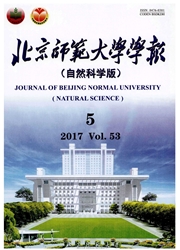

 中文摘要:
中文摘要:
选择自然撂荒40年后的盐碱荒地上的植被作为研究对象,通过野外观测、采样和室内分析,初步探讨了新生盐碱荒地土壤表层之微域特征,以及土壤水分、盐分条件对盐生植被群落格局形成的影响.结果表明:区域内主要植物群落为碱蓬、芦苇、马绊3种,碱蓬单位面积株数大大高于其他植物群落;植被群落对应的土壤水分含量与电导率呈极显著相关关系,以光板地电导率最高;不同植被类型对降低土壤含盐量的影响能力不同,以芦苇群落影响最大,同时芦苇群落对降低土壤碱性金属含量的影响最大.
 英文摘要:
英文摘要:
Salt plant vegetation on saline wasteland naturally abandoned for 40 years was investigated.The soil surface micro-domain of newborn saline wasteland was characterized,effects of halophytic vegetation,soil moisture and salinity conditions on the formation pattern of vegetation community were analyzed by field observation and laboratory analysis.It was found that Suaeda glauca,Phragmites communis and Aeluropus littoralis were major plant communities in the region,with Suaeda glauca having the highest plant density;Soil moisture content and electrical conductivity of plant community was highly correlated.Light board had the highest conductivity;Vegetation types had different impacts on reducing soil salinity.Phragmites community showed the greatest impact on reducing soil alkalimetallic content.
 同期刊论文项目
同期刊论文项目
 同项目期刊论文
同项目期刊论文
 期刊信息
期刊信息
